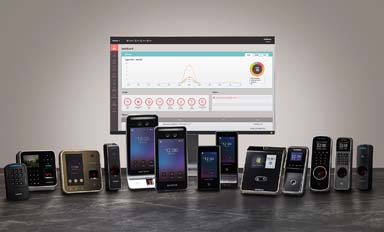- Latest press releases from Suprema

In the rapidly evolving world of data center security, advancements in biometric technologies are playing a pivotal role in balancing robust security measures with user convenience.
As the need for secure, accessible, and efficient authentication methods grows, industry leaders are increasingly turning to sophisticated biometric solutions.
This article explores the integration of these technologies into access control systems and how they are revolutionizing security protocols in data centers.
The shift to touchless and mobile solutions
The onset of the COVID-19 pandemic has accelerated the shift towards more hygienic and touchless security solutions. Traditional fingerprint recognition systems are making way for advanced facial recognition technologies and mobile access solutions.
These changes are particularly important in environments like data centers, where security and convenience are paramount.
“The COVID-19 pandemic has significantly impacted various aspects of security, including data center security,” said Hanchul Kim, CEO of Suprema. “One notable trend is the shift from fingerprint recognition to touchless facial authentication and RFID physical card to mobile solutions.”
Multi-factor authentication: a new standard
Data centers, known for their stringent security requirements, are now employing two to three-factor authentication (MFA) systems as standard practice. The integration of mobile access with biometric verification forms the backbone of this new approach.
Users can now utilize their smartphones as keys, which, when combined with an additional authentication method like facial recognition or iris scanning, provides a secure yet convenient access solution.
“In data center security, two to three-factor authentication (MFA) is essential for securing highly restricted areas,” Kim said. “The most common method now is a combination of mobile access and biometrics.”
Industry-specific implementations
In response to the increasing demands for higher security in sensitive areas, companies are broadening their authentication strategies. A notable advancement is the adoption of a comprehensive multi-credential approach.
This method incorporates a variety of verification options such as facial authentication, fingerprint scans, mobile access, QR codes, and RFID, thereby enhancing the security of highly restricted areas without compromising on user convenience.
Moreover, the importance of integrating mobile solutions is emphasized, allowing users to easily incorporate mobile access into their existing apps. This integration simplifies the authentication process, making access both quicker and safer, while also enhancing user experience by leveraging the convenience of smartphones.
Streamlining deployment with remote enrollment
Another challenge in data center security is the enrollment process for biometric verification. Given that data center users may not visit the site daily, enrollment could traditionally take weeks or months. To address this, some companies have developed partnerships with biometric technology providers to streamline the enrollment process.
For instance, a company may use cardholder's photo already stored in the access control system for facial verification. If the photo meets quality requirements, there is no need for customers to be physically present onsite for enrollment. This method significantly reduces deployment time and enhances the overall user experience.
“There is always a balance between security and user convenience,” said Gaoping Xiao, Director of Sales – APAC at AMAG Technology. “Data centers need to enroll a customer’s biometric information when using multi-factor verification such as card plus PIN. The challenge is data center users may not come to the data center daily; therefore, enrollment may take weeks or months.”
“We work with some biometric partners whose technology enables us to use the cardholder's photo in the existing access control system for facial verification if the photo quality meets the requirement,” Xiao added. “There is no need for the customers to physically come onsite for the enrollment of their facial information, which streamlines the entire deployment process.”
Balancing security with convenience
The ongoing challenge in data center security is maintaining a delicate balance between stringent security measures and user convenience. As biometric technologies evolve, they offer promising solutions to achieve this balance effectively.
The integration of facial recognition and iris scanning into access control systems is not just about enhancing security—it also makes the system more accessible and user-friendly for everyday users.
The integration of advanced biometric technologies into data center security systems is transforming how access is managed, prioritizing both security and convenience. With touchless authentication methods and streamlined enrollment processes, the future of data center security looks both secure and adaptable, ready to meet the challenges of a rapidly changing technological landscape.
Source: asmag.com












